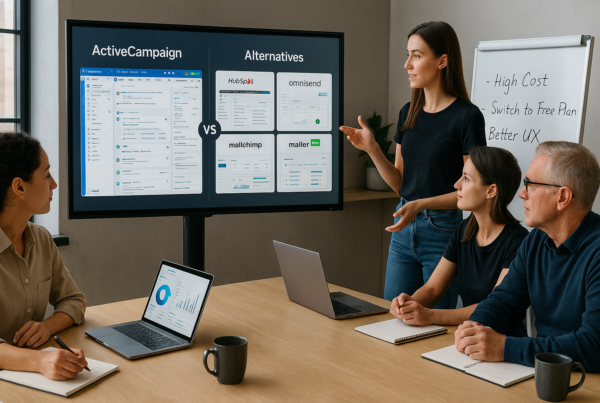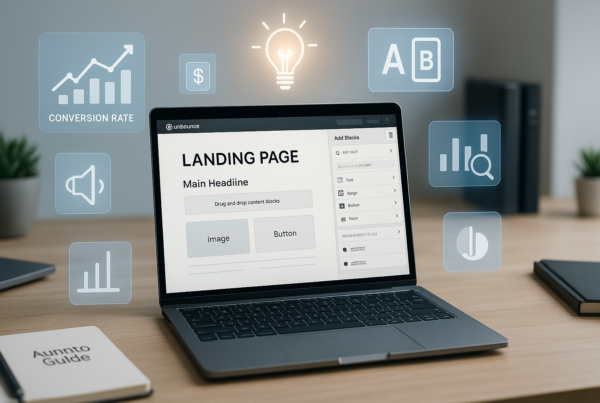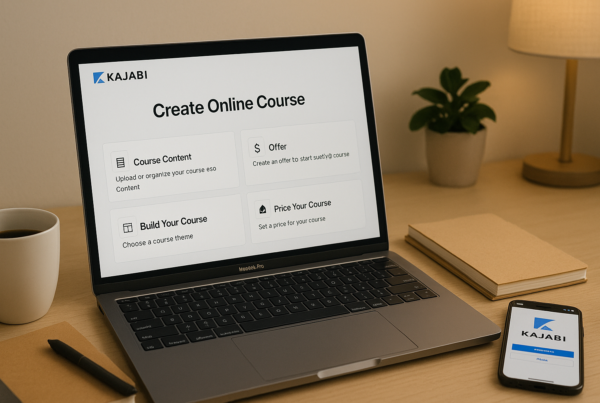A landing page should be simple and clear. But many landing pages are confusing, messy, and push visitors away. When a landing page is poorly designed, it affects ad conversion rate and lowers sales.
If people are clicking but not buying, it’s time to fix the page. Learning how to improve landing page conversions starts with small changes. Clear headlines, strong call-to-action buttons, and fast loading times make a big difference. The right landing page optimization tools can also help.
A landing page isn’t just any webpage, it’s the key to turning visitors into customers. Every detail matters, from colors to words. When done right, conversions will improve, and ads will perform better. Simple fixes can lead to big results. Let’s explore how to create a landing page that actually works.
The Impact of Landing Pages on Conversions
Your landing page is like the first handshake with a potential customer. A weak handshake? They walk away. A strong one? They’re intrigued. Your landing page affect ad conversion rate massively, and without proper landing page optimization tools, you’re leaving money on the table.
A well-optimized landing page can turn curious visitors into paying customers. A bad one? It just burns your ad budget.
The Psychology Behind Conversions
Before jumping into fixes, let’s talk psychology. People don’t just convert because your page looks pretty. They convert because:
- They instantly understand what you’re offering.
- They believe it’s valuable to them.
- They feel a sense of trust and urgency.
- The next steps are crystal clear.
Miss any of these? Boom. They’re gone.
How to Improve Landing Page Conversions: 5 Mistakes to Fix
Here are five reasons your landing page is struggling and what you can do to improve landing page conversions.
1. Your First Impression is a Mess
You have about five seconds. That’s all. People click on your page, take one look, and decide whether to stay or leave. If your landing page looks confusing, they’re gone.
Most bad landing pages suffer from the same issue, unclear messaging. I saw pages where I had to play detective just to figure out what the product was. People won’t do that. They’ll just leave. And when that happens, your landing page affect ad conversion rate in the worst way possible.
Solution?
- Your main headline should instantly tell visitors what your product or service does.
- The subheadline should highlight the key benefit.
- The “above the fold” section (everything visible before scrolling) should be crystal clear.
Imagine someone lands on your page and instantly thinks:
- “Oh, this is relevant.”
- “This is valuable.”
- “This looks interesting.”
- “This feels trustworthy.”
If they don’t feel at least one of those, your page needs a refresh.
2. Your Benefits Are Playing Hide and Seek
Marketers love saying, “Sell benefits, not features!” Great advice. But here’s the thing, both are important.
Benefits grab attention. Features justify the purchase.
I saw landing pages where benefits were buried in small paragraphs, lost in walls of text. People don’t read landing pages like a book. They skim. If your best selling points aren’t jumping out, they might as well not exist.
Solution?
- Make big, bold headlines.
- Use bullet points.
- Keep paragraphs short.
For example, instead of:
“Our advanced AI-driven platform helps you control data across multiple platforms, ensuring seamless interactions and improved efficiency.”
Try:
“Take Control of Your Data. Seamlessly Sync Across Platforms.”
See the difference? The second one pops out. No effort is needed to understand it. That’s how to improve landing page conversions instantly.
3. Social Proof? What Social Proof?
People trust people more than they trust brands. That’s why social proof is critical. Yet, I reviewed pages with 100+ five-star reviews on Amazon but zero testimonials on their actual landing page. Mind-blowing.
Solution?
- Add testimonials near your call-to-action.
- Show real numbers (“Join 12,000+ happy customers!”).
- Use recognizable logos if you’ve worked with well-known brands.
- Include screenshots of actual customer reviews.
Even a single testimonial saying, “This saved me so much time!” can increase conversions.
4. No Reason to Act Now
“Sign up whenever! No rush.”
That’s basically what a lot of landing pages say. And guess what? People procrastinate. They think, “Eh, I’ll check it out later.” But they won’t.
Solution?
- Use a countdown timer for limited-time offers (but don’t fake it).
- Highlight the cost of waiting (“Prices increase in 24 hours!”).
- Show how the problem gets worse without your solution.
People act when they feel urgency. Give them a reason to take action now.
5. No Clear Next Steps
Some landing pages do a great job selling, but when it’s time for action, they fumble the ball. They get you excited but leave you confused about what to do next.
One page I saw had a great story about how the product changed lives. But when I got to the bottom, I had questions:
- What happens after I buy?
- Is it a video course? A live session? An ebook?
- How do I access it?
People hate uncertainty. It creates risk, and risk kills conversions.
Solution?
- Tell people exactly what will happen when they sign up or buy.
- Show a step-by-step process.
- Use future pacing (“Sign up today, and by next week, you’ll be getting results.”).
A good landing page makes the next step obvious and exciting.
How Landing Page Optimization Tools Can Save You
Optimizing a landing page isn’t just about fixing mistakes, it’s about using the right tools to do it efficiently. Here are some landing page optimization tools that can help:
1. Hotjar
Tracks where users click and what they ignore.
2. Google Optimize
A/B testing to see what works best.
3. Unbounce
Helps create and tweak high-converting landing pages.
4. Crazy Egg
Heat Maps to show how visitors interact with your page.
5. Optimizely
Advanced testing for serious conversion boosts.
Using these tools can help you understand exactly what’s working, and what’s driving people away.
The Secret Sauce: Storytelling & Humor
Let’s be honest, most landing pages are boring. They feel robotic, like they were written by a corporate AI that’s never talked to a human. If you want to improve landing page conversions, you need to sound like a human.
Use humor. Tell a story. Make your audience feel like you’re talking directly to them, not at them.
For example, instead of saying:
“Our software streamlines workflow processes for increased efficiency.”
Try:
“Tired of spending hours on tasks that should take minutes? Our tool does the boring stuff for you, so you can finally have lunch without checking your emails.”
See the difference? One sounds like a tech manual. The other sounds like a real person who understands your pain.
Here’s an SEO-optimized version of your three new sections with the required keywords naturally included:
Mobile Optimization: Your Secret Weapon for More Conversions
Did you know that over 58% of web traffic comes from mobile devices? If your landing page isn’t mobile-friendly, you’re losing a massive chunk of potential customers. A poor mobile experience means slow load times, distorted images, and buttons that are impossible to tap. And guess what? That directly affects your landing page affect ad conversion rate in the worst way possible.
How to improve landing page conversions with mobile optimization:
- Use responsive design so your page adapts to all screen sizes.
- Make CTA buttons big enough for easy tapping.
- Reduce image sizes to speed up loading times.
- Keep forms short, nobody wants to type a novel on their phone.
Want a quick test? Open your landing page on your phone. If you have to pinch and zoom to read anything, it’s time for a redesign.
The Power of A/B Testing: Find What Works Best
Even expert marketers don’t get it right the first time. That’s why A/B testing is a must when using landing page optimization tools. By testing different headlines, CTAs, and layouts, you can see what actually drives conversions instead of guessing.
How to improve landing page conversions with A/B testing:
- Test one element at a time (headline, CTA, colors, etc.).
- Use tools like Google Optimize, Unbounce, or Optimizely to track results.
- Run tests for at least a few days to get accurate data.
- Focus on metrics like bounce rate, time on page, and conversion rates.
A simple change, like tweaking your CTA text, can increase conversions by 20-30%. Never assume, always test!
Speed Matters: Why Slow Pages Kill Sales
40% of people leave a website if it takes longer than 3 seconds to load. A slow landing page doesn’t just frustrate visitors, it also hurts your landing page affect ad conversion rate. If you’re spending money on ads, but your page takes forever to load, you’re burning cash.
How to improve landing page conversions by improving speed:
- Use a content delivery network (CDN) to load pages faster.
- Optimize images with tools like TinyPNG.
- Enable browser caching so returning visitors experience faster loads.
- Minimize code and scripts that slow down the page.
Want a quick speed check? Use Google PageSpeed Insights. If your score is below 80, you’ve got work to do!
Visual Hierarchy: Guide the Eye to Conversion
People don’t read every word, they scan. If your most important message blends in, it won’t be seen. A strong visual hierarchy makes sure visitors notice what matters.
What does good visual hierarchy look like?
- Large, bold headlines for your key benefits.
- Color contrast to make buttons stand out.
- Whitespace to avoid clutter and guide the eye smoothly.
- Directional cues (like arrows or a person looking toward your CTA) to subtly direct attention.
A simple tweak, like making your CTA button a bright, contrasting color, can instantly boost conversions.
Final Thoughts
Landing pages that convert aren’t just pretty. They’re clear, persuasive, and easy to navigate. If you want to improve landing page conversions, you need to fix five critical issues:
- Make a killer first impression.
- Highlight benefits in big, bold text.
- Show social proof upfront.
- Create urgency.
- Give clear next steps.
A study by Unbounce found that adding testimonials increased conversions by 34%, while another report showed that simplifying a landing page layout improved conversions by 42%.
Your landing page affects ad conversion rate more than you realize. A slow, confusing, or poorly designed page can drive potential customers away, wasting your ad budget. That’s why landing page optimization tools like Unbounce, Hotjar, and Google Optimize are essential. They help you test different elements, refine your layout, and improve call-to-actions (CTAs) to boost conversions.
Want better results? Start by identifying weak spots on your page and making small, strategic changes. How to improve landing page conversions? It all starts with clarity, simplicity, and the right tools.
Now, tell me, what’s the first thing you’re going to optimize on your landing page?





